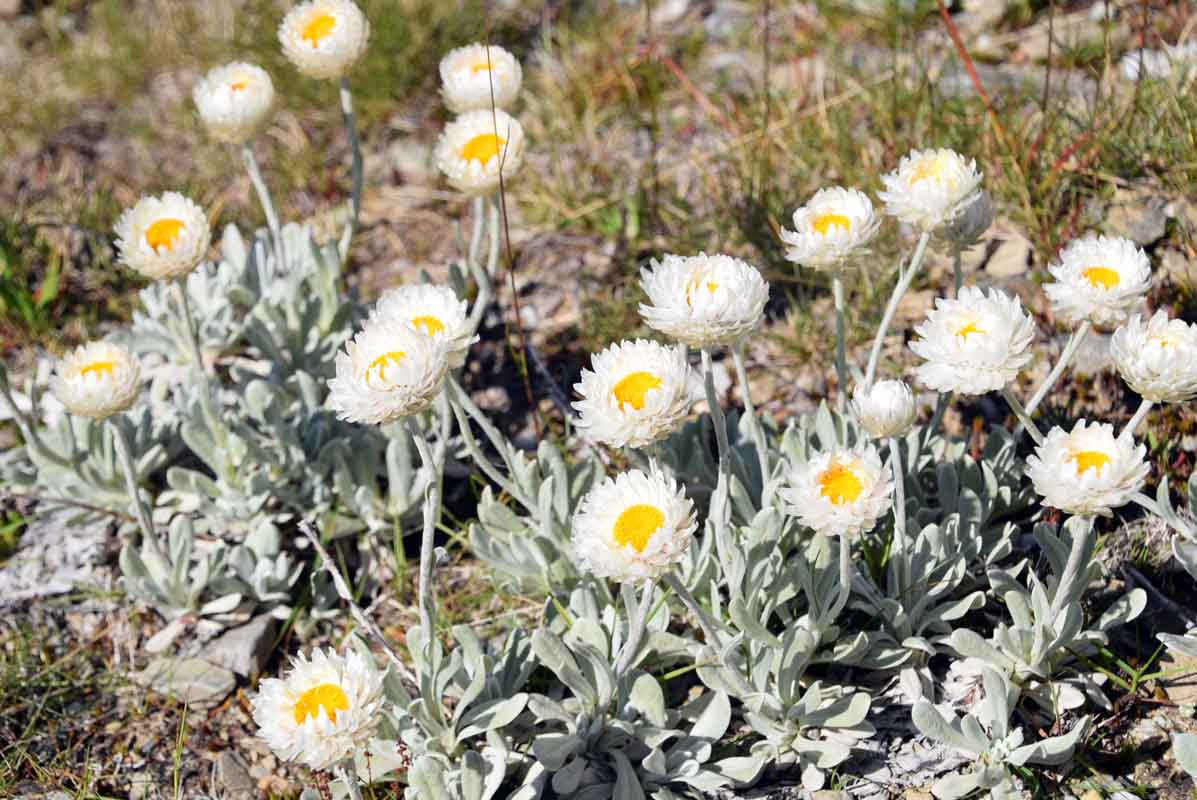2020 Australian Alps Walking Track
 Paper Daisy
Paper Daisy
In my previous post I discussed my choice for heading north when I start my thru hike on the Australian Alps Walking Track (AAWT). This one key choice now allows me to plan the rest of my trip with the next key consideration being ‘when to hike’.
Long distance hiking trails in Australia fall into three main categories. Those that can be walked year round, those that can only be walked at certain times of the year because the trails may be closed, and those that can be walked year round but really shouldn’t unless you make some serious planning and logistical considerations. The AAWT is one of those in between trails; it can be walked year round but as far as the majority of hikers go, probably shouldn’t be walked in mid winter. Some people can and do walk the AAWT in mid-winter but you need to have serious snow experience and winter survival skills to do it safely. Walking in mid-summer means you are exposed to high temperatures, high UV, and you may be impacted by bushfires.
Over the past six years I have read and researched all I can find on the AAWT as well as walking various parts of the northern end of the track. What is very apparent is that most people seem to walk the AAWT in two main windows. The first being from late October through to mid-December (e.g. Spring to early Summer), and the second is from March through to mid-April (e.g. Autumn). Both of these windows provide different challenges.
Spring Window
Anecdotally, most people walk the AAWT in the Spring-early Summer window. During this period there is potential to be impacted by snow and over the past few years I have seen instances where we have had snow in early December on the higher sections of the trail. Even if the majority of snow has gone, you are highly likely to have snow drifts you will need to cross on the high sections of the alps so you need to factor this in to your planning. The Spring window will have good water availability from the Spring snow melt, but this can also mean that some river crossings may involve you getting wetter than you had planned. I try to avoid getting wet where I can but at this time of the year it’s harder to avoid.
One other potential negative for picking this time of the year is the snake activity. I know from personal experience in sections of the AAWT I have walked that during late Spring and early Summer there are likely to be a much greater degree of snake activity. Given this track involves walking through remote areas, sometimes through long grass off-track, I expect to come across snakes; it’s a given. I usually don’t wear gaiters when I hike but on this track they will form part of my standard kit. A very big bonus of this time of the year are the wildflowers.
Autumn Window
Choose the Autumn window and you may struggle with water availability away from the main streams and rivers. When I hiked a 112 km section of the AAWT from Kiandra to Tharwa in April 2019, water sources that had consistently provided me with water over a number of years, had dried up leaving only the main streams and rivers.
Snow again can be a problem in the Australian Alps and this year we had heavy snowfalls in mid April in the high country. Having said that, sections of the AAWT are still closed due to the Summer bushfires.
And the winner is?
In my case I have opted for the Spring window and have my start date at 14 November 2020. I have three reasons for my decisions:
- I tend to favour Spring time walking. I just like the weather patterns at this time of the year
- I prefer to walk at a time when there are likely to be more wildflowers and the late Spring window is a great option
- Last but not least, this time fits in well with my personal and work commitments.
In an ideal world, I would have prefered to start walking in the last week in October but given some pre-existing commitments, I am starting three weeks later than I would have liked.
In my previous post I discussed my choice for heading north when I start my thru hike on the Australian Alps Walking Track (AAWT). This one key choice now allows me to plan the rest of my trip with the next key consideration being ‘when to hike’. Long distance hiking trails in Australia fall into […]